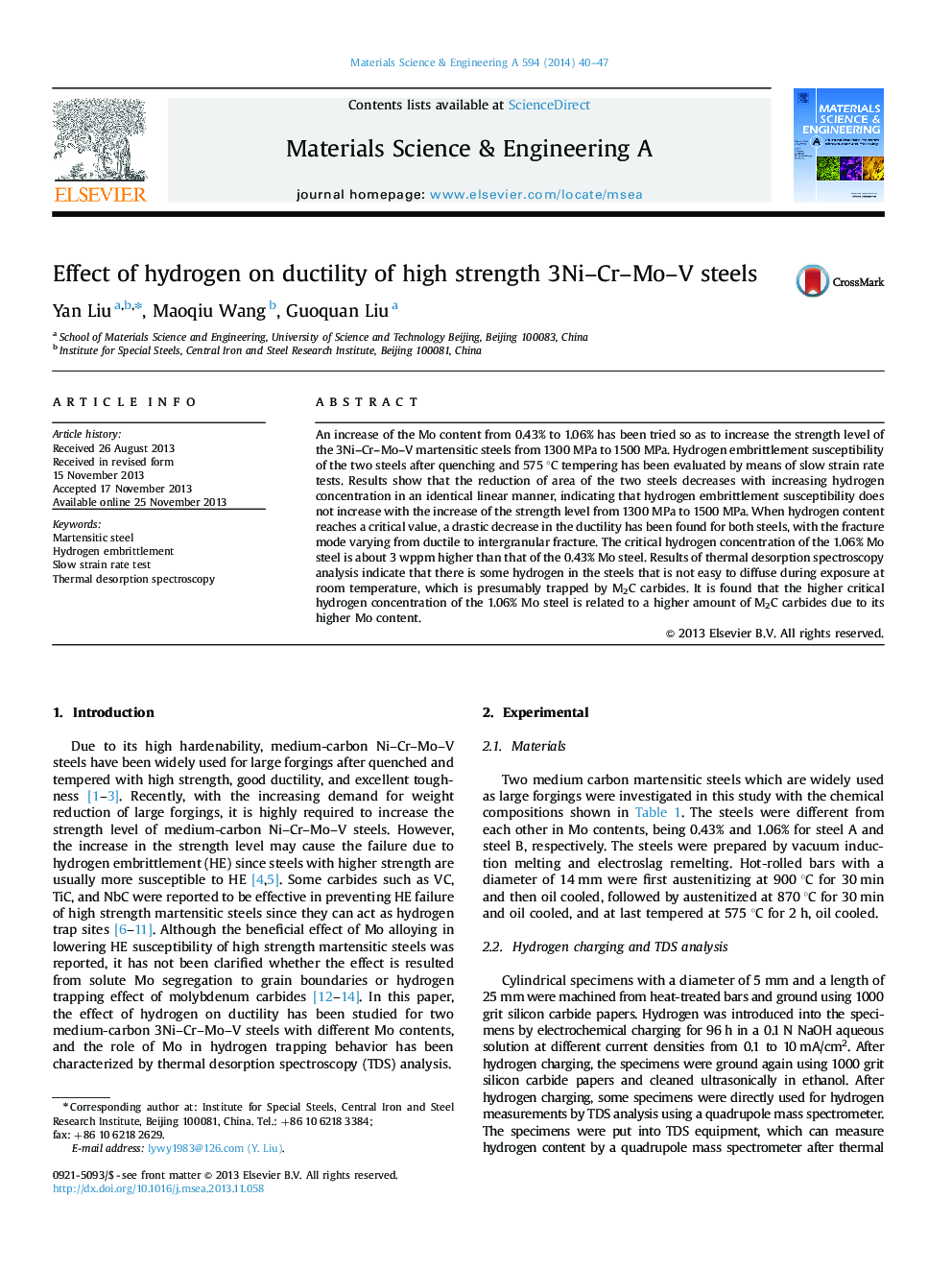| Article ID | Journal | Published Year | Pages | File Type |
|---|---|---|---|---|
| 1575439 | Materials Science and Engineering: A | 2014 | 8 Pages |
Abstract
An increase of the Mo content from 0.43% to 1.06% has been tried so as to increase the strength level of the 3Ni-Cr-Mo-V martensitic steels from 1300 MPa to 1500 MPa. Hydrogen embrittlement susceptibility of the two steels after quenching and 575 °C tempering has been evaluated by means of slow strain rate tests. Results show that the reduction of area of the two steels decreases with increasing hydrogen concentration in an identical linear manner, indicating that hydrogen embrittlement susceptibility does not increase with the increase of the strength level from 1300 MPa to 1500 MPa. When hydrogen content reaches a critical value, a drastic decrease in the ductility has been found for both steels, with the fracture mode varying from ductile to intergranular fracture. The critical hydrogen concentration of the 1.06% Mo steel is about 3 wppm higher than that of the 0.43% Mo steel. Results of thermal desorption spectroscopy analysis indicate that there is some hydrogen in the steels that is not easy to diffuse during exposure at room temperature, which is presumably trapped by M2C carbides. It is found that the higher critical hydrogen concentration of the 1.06% Mo steel is related to a higher amount of M2C carbides due to its higher Mo content.
Keywords
Related Topics
Physical Sciences and Engineering
Materials Science
Materials Science (General)
Authors
Yan Liu, Maoqiu Wang, Guoquan Liu,
